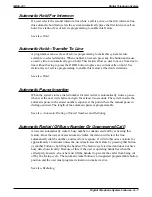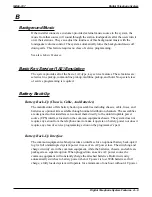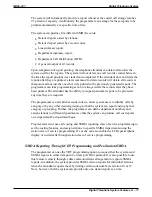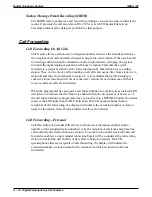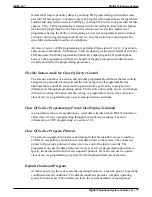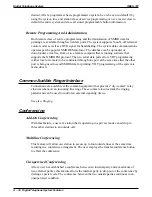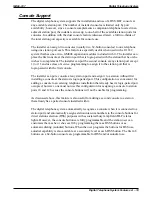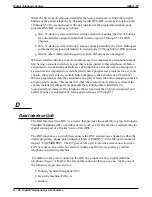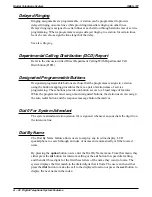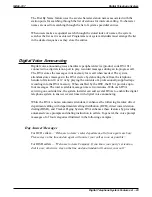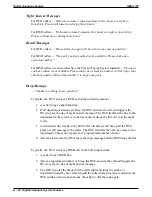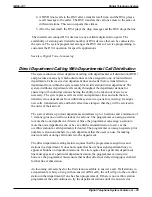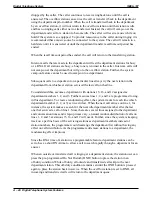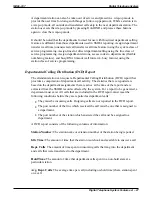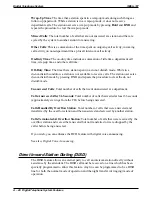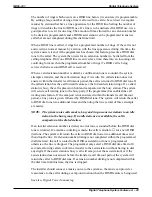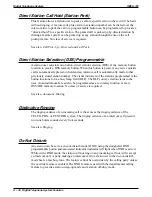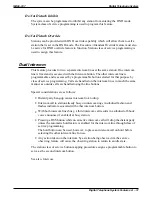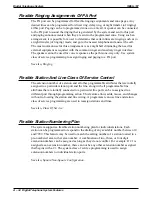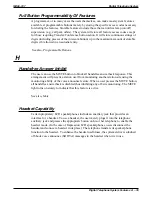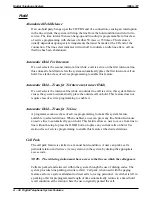
The user controls the DIU by pressing a preprogrammed DATA button on his/her digital
telephone. The installer can also program a DATA button on a remote telephone that can
control the DIU as well. The DATA LED on the digital telephone provides the user with
visual feedback on DIU status.
The system administrator can program up to three security groups and assign them to
work groups. This safeguards stored data on IST devices such as personal computers by
denying access to users from outside the group. For example, if a caller in security group
1 calls a station in security group 2, and the IST device on the DIU at the called station is
selected, the caller will hear a busy tone. When the multiline telephone on the DIU is
selected instead, the caller can make a station to station call in the normal manner.
The DIU will operate reliably at baud rates up to 9600 (outside calls) and 14400
(intercom calls).
Data Security
This data security feature will prevent any type of tone (DTMF, camp-on, barge-in, etc.)
from interrupting a call that is active on a port programmed with the feature. This
prevents interference to non-voice communications from occurring when the port is
being used as a data port (when operating a modem through an ATI-D port for, example).
The programmer can use station class of service programming to enable a data security
port.
Default Functional Program
At initial power-up, the system sets the operating features to a specific group of operating
conditions (default conditions). The default conditions provide a complete operating
system for normal use. The installer can leave the system defaulted or reprogram as
desired. After a programmer has reprogrammed a system, he or she can re-default it by
using the system, line, and station class of service programming or use a master clear to
default the entire system and erase all stored programmable button information.
See also, Class Of Service.
Default Toll Restriction
The system defaults two toll restriction tables with pre-programmed values and
pre-assigned to all lines. The programmer needs only to assign these tables to the stations
by programming action to put them into effect. He or she can use the toll restriction table
configuration class of service programming to reprogram the defaulted tables with
different information as needed.
See also, Toll Restriction.
IMI66–107
Digital Telephone System
Digital Telephone System Features A – 21
Summary of Contents for Air Impact DSU
Page 2: ...Printed in U S A GCA47 157 ...
Page 30: ......
Page 112: ......
Page 192: ...Digital Telephone System IMI66 107 3 80 System Programming ...
Page 283: ......
Page 284: ......
Page 285: ......
Page 286: ......
Page 287: ......
Page 288: ......
Page 289: ......
Page 290: ......
Page 291: ......
Page 292: ......
Page 293: ......
Page 294: ......
Page 295: ......
Page 296: ......
Page 297: ......
Page 298: ......
Page 299: ......
Page 300: ......
Page 301: ......
Page 302: ......
Page 303: ......
Page 304: ......
Page 305: ......
Page 306: ......
Page 307: ......
Page 308: ......
Page 309: ......
Page 310: ......
Page 311: ......
Page 312: ......
Page 313: ......
Page 314: ......
Page 315: ......
Page 316: ......
Page 317: ......
Page 318: ......
Page 319: ......
Page 320: ......
Page 321: ......
Page 322: ......
Page 323: ......
Page 324: ......
Page 325: ......
Page 326: ......
Page 327: ......
Page 328: ......
Page 329: ......
Page 330: ......
Page 331: ......
Page 332: ......
Page 333: ......
Page 334: ......
Page 335: ......
Page 336: ......
Page 337: ......
Page 338: ......
Page 339: ......
Page 340: ......
Page 431: ......
Page 436: ......
Page 437: ......
Page 438: ......

